Ultimate Guide to Exercises for Lumbar Herniated Disc Relief 2
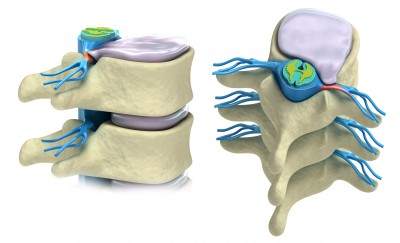
Did you find our previous article, “Disc Herniation Part 1,” helpful but are still battling discomfort? Are you eager to discover exercises that can effectively reposition your herniated disc and enhance your well-being? You’re in the right place.
In this comprehensive guide, we’ll cover:
- Effective Exercises for Repositioning a Herniated Disc: Learn the top movements to gently coax your disc back into alignment, reducing pain and improving mobility.
- Stabilization Techniques to Prevent Disc Displacement: Discover exercises that strengthen your core and back, ensuring your discs stay in place.
Understanding Lumbar Disc Herniation:
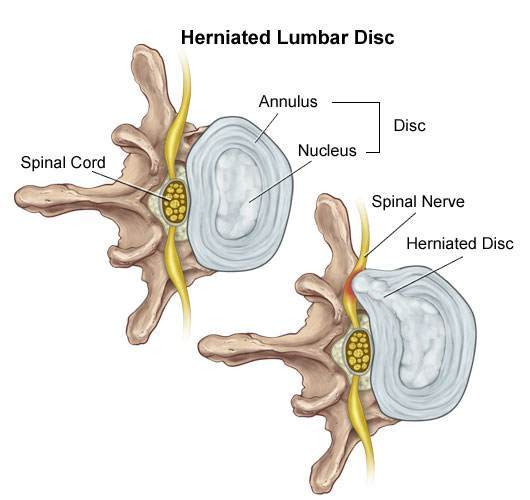
A herniated disc occurs when the disc’s nucleus breaks through the annulus, as shown in the illustration from neurosciences.beaumont.edu. But what triggers this displacement? The primary culprit is forward bending, which compresses the disc (think of it as a jelly-filled doughnut) and can lead to the annulus fracturing, allowing the nucleus to protrude and press against nerves.
Why Does it Hurt?
The disc’s exterior is tough cartilage, while its interior is softer, akin to mucus. Applying pressure on one side forces the inner material to the opposite side, similar to squeezing a doughnut. When a herniated disc or inflammation puts pressure on a nerve, pain ensues. The key to relief is applying counterpressure to reposition the disc.
For a deeper dive into herniated discs, refer to “Disc Herniation Part 1: Best Self-Treatments for Lumbar Disc Herniation.“
How to Apply Counterpressure:
The strategy involves bending your spine backwards or into the extension to shift the disc away from the nerve.
Exercises to Reposition a Herniated Disc: Note of Caution:
Initially, these exercises might intensify your pain slightly. If pain significantly worsens or radiates further down your leg during these exercises, cease immediately and consult a professional.
Exercises for Lumbar Herniated Disc
#1 Prone Lying Lumbar Herniated Disc
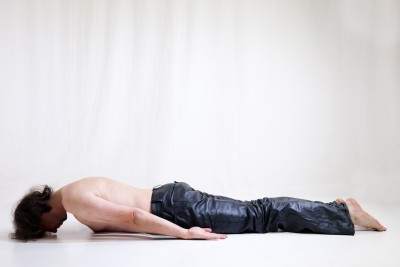
- Lie face down or prone in bed with your elbows tucked in under your side:
- As soon as you get up in the morning you should lie prone (face down). By getting in this position, your lower back becomes more arched, or as doctors say, you increase your lordosis.
- The increased lordosis pushes on the back of the disc helping to bring the nucleus forward into the correct position.
#2 Sphinx pose in Yoga For Lumbar Herniated Disc
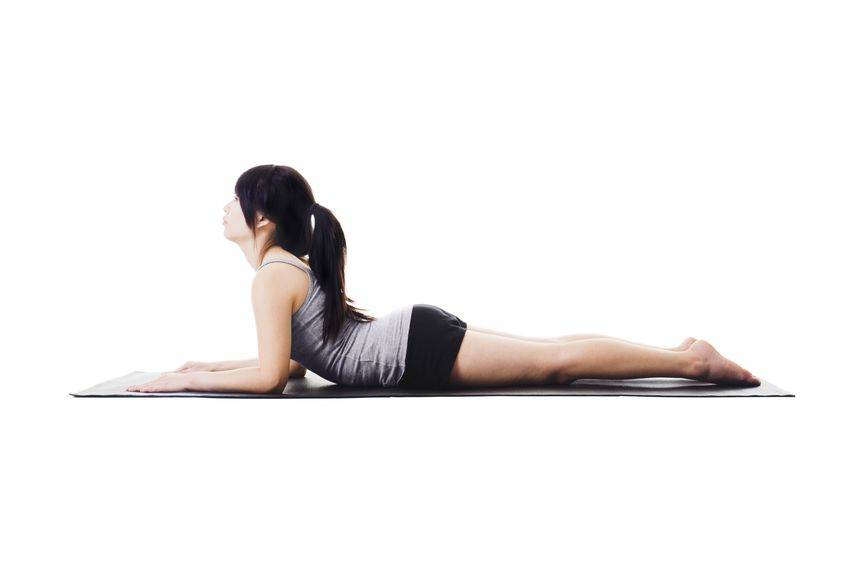
- Get into the prone position lying down on your stomach.
- Next, get on your elbows. If you have a hard time with this position go back into the prone lying position.
- Do these exercises hold each time for 1-2 seconds 6-8 times per set? This exercise can be repeated every two hours throughout the day.
Asses yourself. If the pain has decreased or the pain has moved away from the leg or thigh and into the hip or buttock, this is an improvement. Even if the pain is increased in the back but relieved in the leg this is an improvement and a green light that you should continue this exercise. You also get a green light if there is no difference at all.
- If your self-assessment gives you the green light, move on to the Cobra exercises just below.
- If your thigh or leg pain is worse, then stop right away.
- If your lower back, thighs and legs are the same you get a green light, so move on to the Cobra exercises.
#3 Cobras For Lumbar Herniated Disc
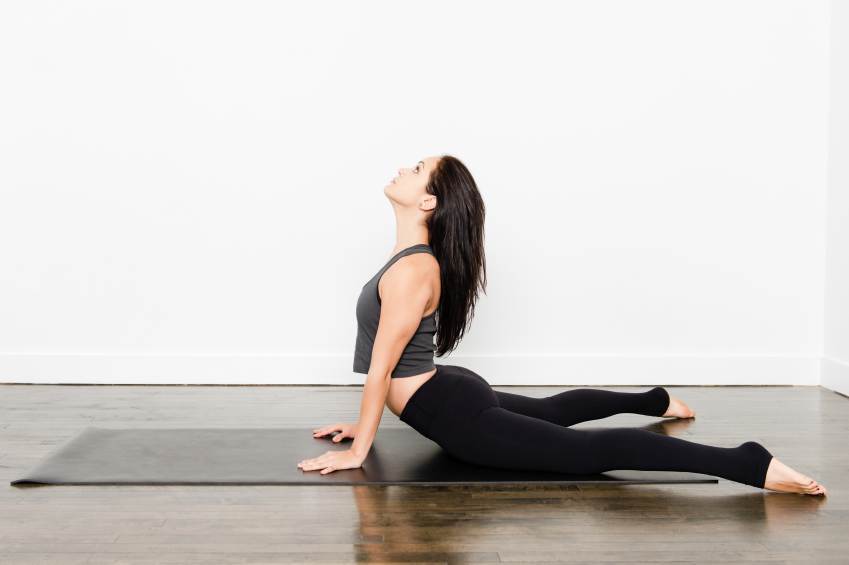
- Lie down face down with your hands underneath your shoulders.
- Push up from as high as you can until your lower back stops you or your elbows are straight.
- The pelvis should still be on the floor and the lower back muscles relaxed.
- Do these exercises hold each time for 1-2 seconds 6-8 times per set? This exercise can be repeated every two hours throughout the day.
Asses yourself. If the pain has decreased or the pain has moved away from the leg or thigh and into the hip or buttock, this is an improvement. Even if the pain is increased in the back but relieved in the leg this is an improvement and a green light that you should continue this exercise. If your thigh or leg pain is worse, then stop right away.
#4 Standing Extensions Lumbar Herniated Disc
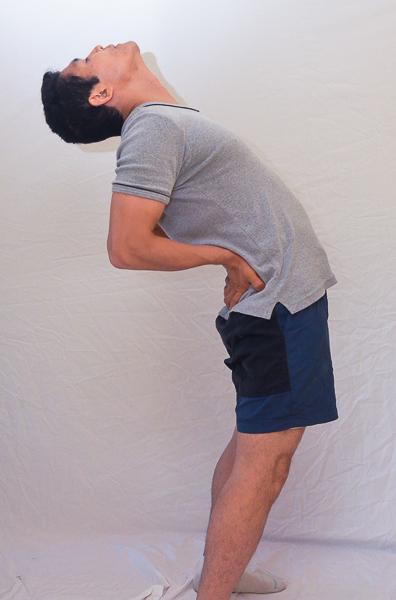
- Stand straight and put your hands behind your hips with your fingers facing down.
- Push your hands into your pelvis so that your lower back arches.
- Don’t use your lower back muscles
- These exercises can be done 6-8 times for 1-2 seconds. This exercise can be repeated every two hours throughout the day.
Stabilization Exercises: Prevent Your Disc From Coming Out By Having A Stable Spine.
#1 Cat-Camel or Cat-Camel For Herniated Disc
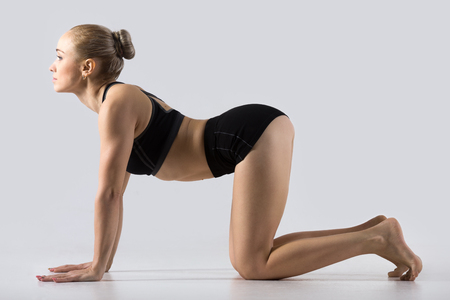
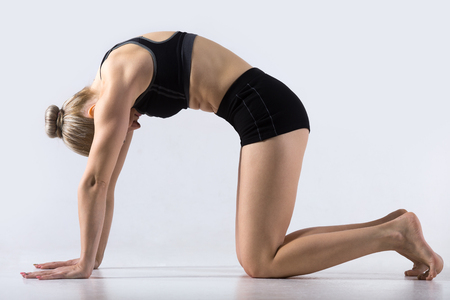
- On all fours with your knees under your hips and hands under your shoulders.
- Inhale and let your belly fall downwards toward the floor as you look up toward the ceiling for 2 seconds.
- Exhale and arch your back up as far as it will go or until you feel pain. You should not feel pain with this exercise, otherwise you are going too high.
- At the same time bend your neck forward and look toward your navel.
#2 Curl-Ups
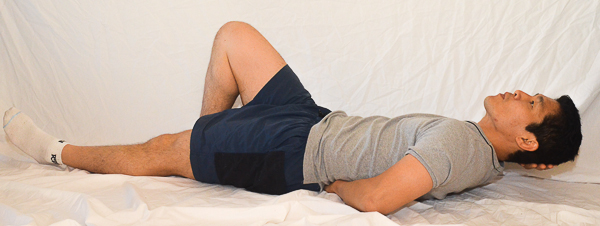
- To start, one foot is bent and the other is straight.
- One forearm goes under the arch of your lower back to support it.
- The other arm is supporting your head.
- Your head and neck come up as one block until your shoulder blades clear the floor.
- Do three sets of 5 working your way up to 10. If it’s easy, then hold for a couple of breaths.
#3 Squats
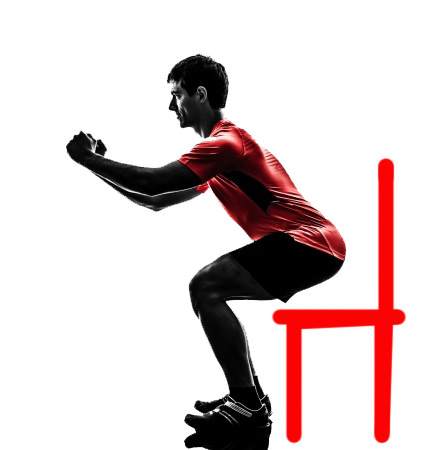
- Stand in front of a chair as if you are going to sit on it.
- Stand with your feet facing slightly more outward than your knee.
- Make sure your butt comes out, and keep lowering your butt until you touch the chair.
- Practice 3 sets of 10.
#4 Bird Dog
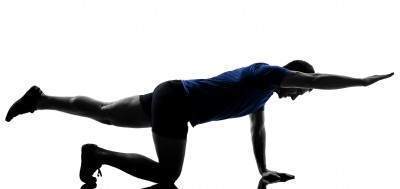
- Get into a crawling position with your hands and feet shoulder-width apart.
- Harden your core by contracting your abs and lower back. This is called bracing.
- Lift your arm first. If this is easy, then lift your leg only. If that is easy, then lift the opposite legs and arms, for example, right leg, and left arm.
- Want to make it tougher? Try lifting an arm and leg on the same side.
- 3 sets of 10. If you are shaking a little or cannot balance quite right, you’re doing the right exercise for you, i.e. lifting just the leg or arm might be easy, but lifting opposite arms and legs might put you off-balance a bit. Make sure you are stable before going to the advanced bird dog.
Tell us what you think in the comments below and like us on Facebook. This Toronto Downtown Chiropractor will answer all questions in the comments section. Let us know your vote for the best Toronto chiropractor in the comments section.
References
1. J Med Genet 2002;39:387-390 doi:10.1136/jmg.39.6.387



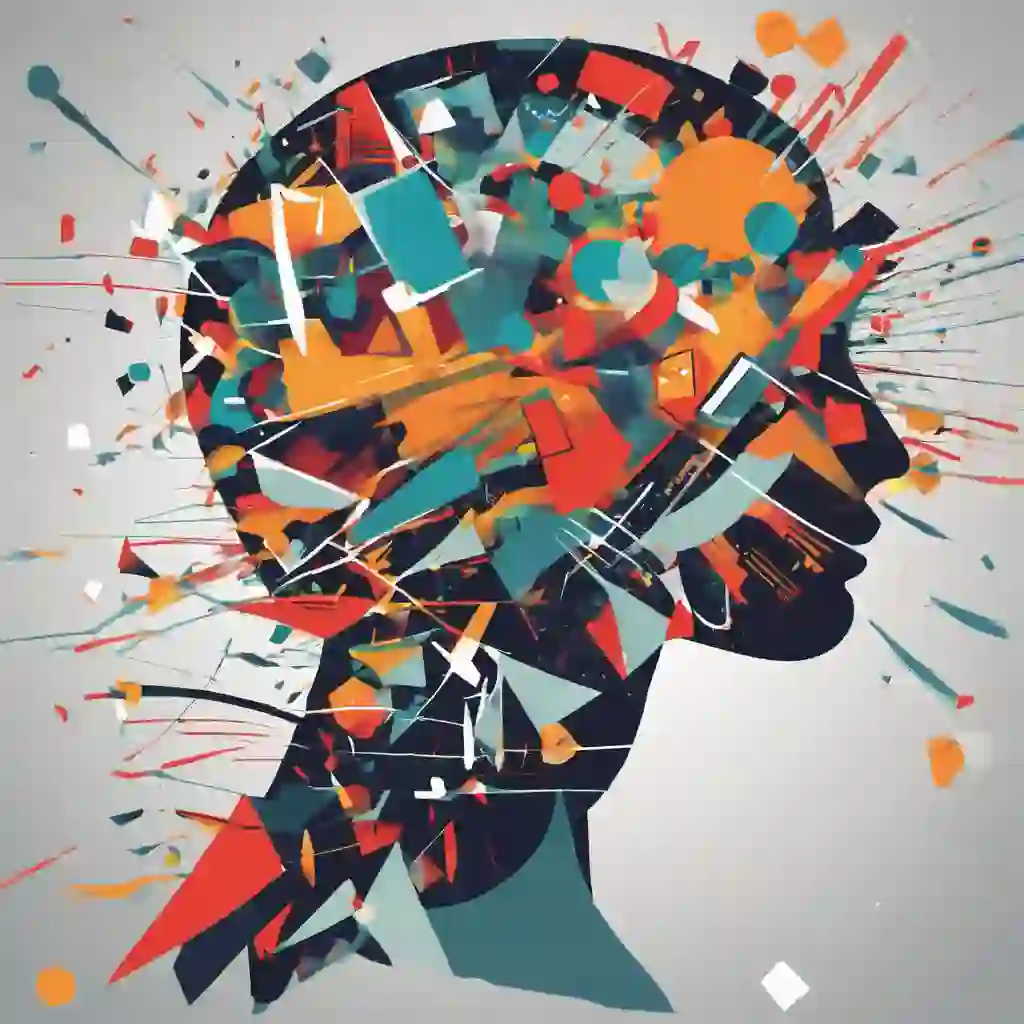
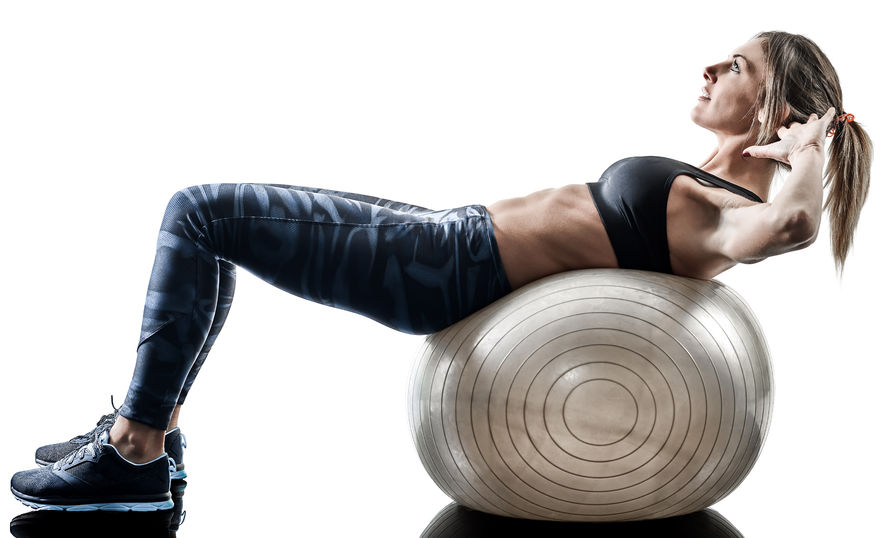
Author
Thanks for your question Pankaj. First it might help to have a desk that can move from sitting position to standing position. Yes those are available. You are aggravating your own problem by sitting all the time, which perpetuates the situation.
Try the exercises in this article but make sure initially that it is supervised by someone that is familiar with the exercises. The best physiotherapist or chiropractor found on the internet or a referral is even better. You know you are getting worse if the exercises cause the pain, numbness or tingling to go further own the leg.
Hope that helps your herniated disc.
my wife has serious pain in right side back of head,neck hand upto legs,intially we ignored but it has continued for 3 years,we visited a neurologist who had asked for MRI,the report says 1.she has hemangloma in body of C6 vertebra.
2.At D2D3,right PARACENTRAL extrusion causing indentation over thoracic cord. Please advise how to cure her pain?
please advise sir,she is in severe pain
Author
Thanks for your question Dimbee. Sounds like myelopathy, which is pressure from a disc putting pressure on the spinal cord causing leg symptoms. You can’t get rid of this by exercises alone. You need professional help. Find the best chiropractor or best physiotherapist in your area.
Hope that helps your disc extrusion.
sir,a neuro surgeon says paracentral extrusion at D2 D3 doesn’t cause pain in back of hand and right hand.Is it true?he has asked for MRI BRAIN.I am really worried,is something serious?
Regards,dimbee,india.
sorry back of head and right hand..
Author
Thanks for your question Dimbee. Anatomically speaking yes you are right but it can cause the leg pain. Likely your wife has a something else going on possibly near the hemangioma. You see the MRI is taken with you lying down whereas most people have more pain in their neck and down the arm when they sit, turn their head or bend forward with the their neck. So the MRI doesn’t give you a true picture. Even then anatomy is different from function.
For example most 40 year old people have a little bit of degeneration in the spine especially the lower back but often in the neck as well. Almost everybody has it but only 10 or 20 % of these people have neck pain. So just because you can’t see it doesn’t mean it’s not there. A diagnosis is made by careful examination and history not MRI.
In my opinion a more careful examination and history of the neck is in order. Also it’s important to note that many times unless you treat the neck you often don’t know if the neck is involved. Often times there are no symptoms in the neck.
Hope that helps your herniated disc.
HI Ken,
Iam 32 years old and since 2 years am suffering with severe lower back pain. The pain also shoots into my left buttock untill the foot. My neck and upper back also not relaxed all the time. As per MRT/MRI, i have prolaps in L5, S1,S2 and S3. I have already been to few physiotherapists (in total 40 to 50 appointments) but 0% improvement. The suggested workouts by physiotherapist didnt help. My orthopaedic tried accupunture and homeopathic injections and recently i have taken PRT inection consists of cartizon under CT scan and next week am going to take for the second time. From 2 years i didnt see any improvement in any treatment, infact my pain levels are increasing day by day. Once i also tried Oestopathy for 1 appointment but it didnt help so i discontinued because every specialist i meet they have different opinion and suggests me try something which was not allowed by other specialists. I lost hope in pysiotherapist because everytime i go i feel like they want to finish their 20 mins of appointment time quickly and go to next patient. it is with most of the physiotherapist i visited except one. Also, because of taking so many pain killers i got severe gastric issues and also bladder issue in the prostate. I read the information on your website and i like the way how you described about the issues and the treatments. Please suggest me what should i do, i will send you my latest MRT. Please give me your mail ID. Thanks a million in advance..
Author
Thanks for your question Naveen. You can’t have a prolapse of S1, S2 and S3 as there aren’t discs in between these vertebrae normally. You may be an exception and have a disc between S1 and S2 which is uncommon. It would be extremely rare to have a disc between S2 and S3. I would imagine like winning the lottery type rarity. I have never heard of it let alone seen it. A lot of things don’t fit right with your case. You may have more issues either the problem is very severe which is possible or you have issues like fear avoidance, chronic pain syndrome, reflex sympathetic dystrophy, catastrophizing, central sensitization.
I cannot make a recommendation for you as what you tell doesn’t fit anatomically or otherwise. I cannot help you.
Hi Dr. Ken,
My apologies i have given wrong information. Thank you so much for replying to my query.
Below is my MRI results and it was in German so i tried my best to translate.
Sequences:
[@] Axial and sagittal spin echo T2, coronary and sagittal spin echo T1
findings:
[@] steep spine LWS. starting chondrosis at L5 / S1. Intraspinal and intramedullary no herdth education. Downright position of the cone medullaris. Symmetrical psoas history. Normotope, normal sized kidneys.
The fettsupprimierten STIR measurements show no florid marrow edema in the illustrated axial skeleton.
Segmental shows in detail:
L3 / 4 flat medial protrusion
L4 / 5 medial protrusion
L5 / S1 medial protrusion with dural sac flattening. Bilateral spondyloarthropathy.
Evaluation:
[@]
flat protrusions L3 / 4 to L5 / S1. Steep LWS.
Thanks a million in advance
Author
Thanks for your question Naveen. I understand the MRI from USA, India, Australia, UK and the middle east but this MRI doesn’t have enough detail. Simply saying medial protrusion at a particular level is not meaningful. The report if that is the extent of the report is not up to standards to which I am used to.
Sorry I still cannot help you.
Hi Dr. Ken,
Your site has the most useful resources on lower back problems I’ve seen online. Thanks for taking your time and energy to make them available to the public.
I also have lower back issues. My problem has been going on for years and it always follows the same pattern. Usually when I’m doing sports and do an abrupt movement I feel some small pinch internally, and from there some painful sensation starts spreading from my lower back until it gets very stiff. The following days after that happens, it’s very hard to get up and walk straight after sitting down even for a short time. I also get tilted to the front and to the right side. I also get some slight numbness and tingling sensation in my left foot. That gradually starts getting better until it goes away (sometimes it takes up to a month). My back never goes back to 100% but enough to manage it and somewhat keep doing activities. However, lately those flares started to happen more often.
I’ve seen chiropractors and physiotherapist and I believe there has been progress but not enough to get rid of the problem. I did a therapy of lower back decompression suggested by my chiropractor but I don’t think it really helped. The chiropractor told me not to do any cobra stretch because apparently one of my vertebrae (L4) looks drifted forward (based on the x-ray) and doing the cobra exercise (or similar) would worsen it, he thought the decompression therapy would help align it properly. However, my physiotherapist, who uses the McKenzie method strongly suggests me doing the cobra exercise because he says I have a herniated disc and just like you explain it, that exercise will help push the disk to its place.
I’m convinced I have a herniated disc (even without an MRI) but I’m a bit lost regarding what to do. I would like to maybe do the exercises you suggest and see if things improve but I’m a bit afraid of what my chiropractor advised against. Do you think it’s possible to worsen things with these exercises?
Thanks again for your time and attention.
Author
Thanks for your question Luiz. There are usually 2 or 3 things wrong on X-ray by the time some one is 40 and more so the older you get. The point is that what you see on X-ray most of the time doesn’t correlate to the problem. I would say try what your physio is recommending. If that doesn’t work or makes you worse you are under the guidance of the physio so that it won’t be a problem. If they can make you worse they will now know that is a problem and do corrective exercises to help.
Also the alternative is to see another chiropractor looking up best chiropractor in your area or even another physiotherapist.
Hope that helps your possible herniated disc.
Hello sir,
Also I forgot to ask you if inversion table will help with herniated disc? or aerial yoga inversion pose?
thank you again for your time
Author
Thanks for your question Michelle. Yes a inversion table will help some herniated discs as well as aerial yoga. However you can do the exercises in this article much easier and cheaply than getting an inversion table.
Hope that helps your herniated disc.
Hello Dr. Ken,
I came across your site and I can not say thank you enough for all the information that you put out here. I also like many responses on here I suffer a L4, L5-S1 due to bad exercises and bad postures through out the years. I too have stopped all my daily exercise and only do light walking and I just recently start to go swimming. I usually wake up with back pain and stiffness on both side of the hips. After doing similar exercises that are advise from my doctors for the past few weeks, the back pain has decreased. I only feel stiffness on both of my hips when I sit ( i have a desk job) longer than 30 minutes or when I have to drive. My doctor only said I have herniated disc but according to the stiffness I think I have sciatica? Should I continue the exercise or is there anything else you can help me would be appreciated.
thank you,
Author
Thanks for your question Michelle. I would stick with what is working for you. If that is helping great.
Hope that helps your possible herniated disc.
Dr Ken, I discovered I had lower back problem (L4, L5) since September 2014 after going for MRI. Before that, I remember one day I went for running up and down the heels. I felt too much pain on my left calf muscle. I ignored that pain thinking was normal because I didn’t go for running for 2 months. The pain continued even the time I was walking but I never stopped going for running. The pain become severe and my body posture changed. I was bending aside when I walk. Then I went for MRI. The Doc advised me to go for one month physiotherapy but it didn’t help. When I went back to him he said there is no way out, I have to go for a surgery. I went to see another specialist and also he advised joined me with another physiotherapist but I didn’t help also. I lost hope. I was ready to go for surgery. And then one day I found your blog and the four exercises you advised! I read what other people commented on the comment threads and they brought back my hope. So many people had the same problem as me, so I knew I was not alone. I started doing the four exercises you advised. At first it was hard for me, mind that I was working to bring back my posture and push back the disc. As I went on doing the exercises I started getting relief. It took me like 2-3 months to get back my posture and to free the pain from the calf. Today I can do the running and other activities without feeling any pain. I’m only concentrating on doing C-Taps so that I make the muscles strong to support the spine! Without you I would have already gone for surgery.
Author
Thanks for your great comments Sadiki. I am happy that you were able to get better with only the exercises instead of getting surgery.
Hope you continue to do well with your herniated disc.
I am updesh and i have been suffering from right buttock and right calf nerve pain since 3 months. I have done MRI and the report says Lightning of lumbar spine is seen L4-5 and L5-S1 discs are degenerated and shows reduced height. L4-5 Disc shows diffuse posterior bulge with central to right paracentral protrusion.It causes indentation over thecal sac and right traversing L5 nerve root and L5-S1 Disc shows diffuse posterior bulge with central annular tear and small cetral protrusion. It indents thecal sac and L3-4 disc shows mild diffuse posterior bulge. The doctor says for surgery but I dont want surgery at all. I want to get rid of this without surgery please help me I am just 18 years old and i have to do many things in life please help me.
Author
Thanks for your question Updesh. If you haven’t done conservative therapy like chiropractic or physiotherapy you are getting bad advice. You always do conservative therapy first.
The only exceptions are:
1. If you are having trouble urinating, have numbness or tingling around your groin or anus or both.
2. Progressive neurological symptoms like foot drop that is getting worse or muscle wasting that is getting worse.
3. Conservative therapy has failed.
Otherwise your surgeon is not looking after your best interests. I’ll bet you a public hospital will give you a different answer. Think about why they would give you different answers.
Hope that helps your herniated disc.
Thanks for your valuable answer. It will be great if you could suggest me what exercise and medicine i should prefer for best result. And one more question how much time will it take to get completely normal? Plz sir help me i’m in great trouble
Author
Thanks for your question Updesh. Like I said you should find yourself the best chiropractor or best physiotherapist in your area as exercises alone will not get you better. In fact most exercises will get you worse. You don’t exercises that will likely get you worse do you? I cannot tell you when you will be better based on the information you have given me as it’s not detailed enough.
Hope that helps your herniated disc.
Hi I am 22yrs my lower back l4 l5 s1 disc bulge from 2years doing back exercises daily I can’t sit for long hours and pain in toes’ from 2yrs is not healed how long it takes for natural healing
Pls give me any solution
Author
Thanks for your question Guru. If the diagnosis is a bulge than it with the right exercises you would get better in a month or two. Either the exercises are wrong or the diagnosis is wrong. I would get a second opinion from a medical doctor or chiropractor in your area.
Hope that helps possible disc herniation.
Dr ken
My My father have lower back pain during cold weather and sleeping which confused me. n he been doing this Sphynx exercise but it did not have any changes or any effects or any pain when he’s doing it I want to ask you because he only experienced this pain when he’s on the bed sleeping or when the weather is cold we live in tropical island and when the weather is cold we only caused by the air conditioner dr. Ken we don’t have any physiotherapist in this country so we haven’t diagnosed yet but we want to know if this is the same herniated disc like your page describe because he always sit in the very very hunched posture. Sometimes he’s back shaped like the letter c when he sit and he always put his feet on the table . He’s in his seventies He been experiencing this since he was 30 years old so it’s been 40 years now he did not experience lower back pain even during lifting objects or heavy objects. We haven’t seen any doctors are there any MRI and x-ray regarding this condition because for him is not very serious but he feel the pain is alleviated when he relax his feet and put his feet on something higher to relax his low back muscle other than that he has to take pain killer too Live with the pain. I apologize for the writing and spelling because I’m using a smartphone and I’m writing using voice so thanks verrady much doctor care for your attention.
Author
Thanks for your question Rad. It doesn’t sound like he is going to listen to what you have to suggest if he doesn’t take it seriously. You cannot make him do any exercises. He has to want to do it himself. It sound like he simply has some degenerative changes but I am not going to suggest any exercises as the person himself doesn’t think it to be serious enough.
Hope you understand that whether it’s serious or not the person has to want to get better. Whether it’s a herniated disc or degenerative changes it won’t change his mind. When he thinks it’s serious enough to see someone than it’s time to do something about it.
Thanks for the reply I really appreciate it. He doesn’t believe that this case of his is a herniated disc he thought of it as rheumatism or something else we don’t have any physiotherapist specialist that we can visit or consult with. He has this problem since he was 3 years old is it a degenerative disease to have it as early as 3 years old?
Sorry correction I mean since 30 years old.
Author
Thanks for your question Rad. I said whether it’s a disc herniation or degenerative changes. I didn’t specify a diagnosis. It can be many other problems. Like I said earlier I won’t recommend exercises for the unmotivated.
I can’t a person that doesn’t want to be helped.
Hi Dr. Ken,I’m 36 years old,suffering in extreme lower back pain.I diagnosed of disc protrusion in L1-L2 and L2-L3 2 years ago and my doctor advise me to undergo PLIF but i refused. I undergo in 15 therapy sessions. As of now,I still doing mckenzy exercises. Please help me. Thank you!!
Author
Thanks for your question Ruel. You will need to go to someone who can get you beyond the simple McKenzie exercises. In fact there is a lot more to it then the one exercise for McKenzie that you are doing. You have gone beyond the general extension as you have likely plateaued and probably going up and down but within a zone of pain. Some days worse some days better but generally plateaued. That is what I think I am hearing from you. Let me know if I am wrong.
If that is the case you definitely need to see someone that can examine you. I would see the best chiropractor in your area.
Hope you understand that in your case your herniated disc requires a careful examination in person along with a history.
thank you so much for the advice
Author
You are welcome Ruei.
Hi Dr. Ken,
I’m 57 male, have the typical issues l4/l5, and pronounced scoliosis, close to two inches off center at the worst. I did about 30 decompression sessions which helped a lot. At this point I usually only have pain when walking, mostly just below my butt cheeks, and my feet. Also my calves are very weak, I can’t get up on my toes. Bending back and forward don’t seem to bother. Was wondering if these exercises would be appropriate?
Thank you,
Garry
Author
Thanks for your question Garry. You see I can’t examine you so you will have to answer these questions. Does the pain get worse with sitting, standing, walking, bending forward, moving, being still, AM (morning), afternoon, evening. What makes it better? Go through the same list and answer each one.
Please help. I have had ongoing back pain that has gotten much worse.
I have been in physical therapy for over a year with no relief. I am a hair stylist and love my job but come home in so much pain most of the time. It has gotten so bad that things like doing the dishes or vacuuming or normal everyday things leave me in so much pain. The physical therapist thinks that I have a disc out in my thoracic and that it is out sideways. None of the exercises that she gives me work. The insurance company has denied me for an MRI. I am very active and all of this pain has effected my life and brings me down. Could you please tell me if you have exercises for the thoracic? I really need some advice. Thank you for your time.
Author
Thanks for your question Renee. First I can’t go by a diagnosis of a person that isn’t helping. You haven’t told me where your pain is. How does sitting, standing, walking, bending forward affect you. Are you better in the morning or worse, also in the afternoon and in the evening. Are you better when still or moving. What started the problem? Does it go down your leg into your buttock etc…You need to be more detailed.
Also don’t fret about an MRI they show a lot of things that don’t cause pain which many health practitioners think causes your pain. You have to correlate the history or exam.
Hope that helps your possible herniated disc.
I have had herniated discs in lower back for years. Extending backwards has always made things worse. Ive tried it many times and it always makes thing worse. Extending backward apparently puts pressure on the outer back edge of the bulging disc pushing it even more towards the nerve. Because The herniated disc is futher out than the back part of th spinal bone, the spinal bone extending backward only squeezes it further out back towards the nerve and always causes pain. I am surprised why so many professionals cannot understand this. It is unbelievable how many therapists have only made things alot worse for me by proposing exercises that only made things worse. I have only met one that truely understands how the body works he is the only one who has truely helped. It is just so discouraging seeing how the majority is always on the wrong track.
Author
Thanks for your comment Bill. The reason many therapists, chiropractors, and physiotherapists recommend extension is that most disc herniations go out backwards. You are right that extending the spine puts pressure on the outer back edge. However if the disc is mild to moderate it will actually push it back in. That has been confirmed by Dr. Stuart McGill. However given a larger herniation it will squeeze and pinch that portion that is sticking out and yes cause more pain.
Disc herniations also come in different types. If you have an anterior disc herniation which a disc that is bulging out the front than extensions will make you worse. Provided that the disc herniation is your true diagnosis you can get worse with a larger disc herniation an anterior disc herniation and many lateral disc herniations.
Unfortunately many therapists use a cook book method to treat people. A thorough examination and history are the key to diagnosis. By checking the person with pain in various directions and seeing the effects a good therapists can tell which way a disc is bulging or protruding out.
Glad you found a good therapist in your area.
Hi Dr. Ken, I am 18 years old and I have minimal dick height loss and disk herniation at l4/l5 as well as bilateral narrowing at l4/l5 and l5/s1. I also had a fracture at l5/s1 so I had to get a spinal fusion surgery but my doctor didn’t go near the disk or stenosis because he said I’m still young and he didn’t want to touch the nerves. I was wondering if after I recover from surgery if I can do these workouts with our problems with the fusion. Also I’m wondering if this will get a lot worse over time as I’m only 18 and I’m scared that I won’t be able to live my life. I also have a sub centimeter herniated dick at my t8/t9 and congenital stenosis in neck. Any advice would be helpful and thank you
Author
Thanks for your question Shaddy. You need to ask your surgeon that question as I don’t know what stage in recovery you are at and if the surgery was successful.
Hope that helps your herniated disc.
Dr. Ken, I’ve had back problems for years. Accidents age 16 & 21 (hit head on & tboned) disectomy @25. I’m now 37. I’ve had herniated disc for years but over the years keep hurting myself. I’ve slipped on wet floor & fell, my right leg fell off birthing table causing tremendous pain when having my son 2 years ago & after that I fell on a concrete slab while holding my 5m old infant @ the park & recently I tried to push in a sofa bed which leads me to my most recent pain & mri. In extreme pain after trying to close the couch, I felt like I pulled something. I went to my Dr for a cortisone shot. The pain is tremendous!!!The pain leaves at times but I can tell it’s worse. The shot kicked in a bit about 3 days in.. The mri reads I have a herniated disc L5-S1 extrusion, annular tear/fissure with impigment of the right thecal sac. Canal stenosis & displacement of the right sided nerve roots in the thecal sac. I’m scared, terrified actually. I have a wonderful husband, a 12 year old daughter & 2 year old son. I’m very afraid of surgery. Ive taken pain pills as needed but that’s not the answer. I can’t take nsaids because I have had gastrointestinal issues in the past. I’m looking for a little hope, direction. I’ve been seeing a chiropractor /physical therapy center for so far stem(tens unit) , ultrasound & massage. I am willing to put in work. I’m not a pill person and I want to get better. Can you send me any information you think may help me please. What would you do if this was your result or a family member?
I sent too soon… Thank you for reading & your time spent doing this. I’m looking forward to hearing from you.
Author
Thanks for your question Maria. Sounds like you’ve had some bad luck regarding the accidents. If your symptoms are constant and below the knee there is less chance of getting better with exercises. If the symptoms are above the knee and intermittent there is a better chance of getting better with exercises and conservative treatment with chiropractic or physiotherapy. Really it depends on the skill of the therapist and not really the title.
Sometimes it is better to get surgery but I cannot tell you as you haven’t told me your symptoms. All you have told me is you have an extrusion according to your CT or MRI. Also it’s usually better if someone that can examine you, help you make your decision for you.
Hope that helps your disc extrusion.
Dear Dr. Ken, Am female 59 years old.
History: for a few months started with slight pain in back and hip. Pain in back went away but the pain in the upper right hip continued with a slight numbness in the same leg.
Saw orthopedic surgeon 3 weeks ago about pain in right leg. Did xray and based on the results I was asked to do MRI
MRI findings- Disc dessication in lumbar spine. There is a 6.49mm x 8.86 mm disc herniation at L5/5 and a 8.81mm x 5.78 mm disc herniation L4/5. Mass effect is on thecal sac and cauda equina. The ligamentum flavum and intra spinous ligaments are unremarkable. The lateral recesses are not compromised and there is no nerve root contact.
The pain comes on and off and has moved from upper right leg to lower back. I can withstand the pain most often without painkillers because it’s not constant. Has not worsten since I saw doctor. Slight numbness in leg is still there, but no more pain in upper right hip only centre lower back especially sitting or standing for long periods.
Doctor suggest that I do surgery to relief pressure in back. I am conceded about cauda equina syndrome.
Please guide me as to whether or not if any of your exercises will help based on MRI findings, or surgery. As a matter of fact I have not taken painkiller for the day at it is now 19:30.
I await your recommendation based on the above. Thanks so much for your help. I like reading your articles too and see how much your are helping people.
God’s blessing for a kindheartedness.
L Julie
Author
Thanks for your question Julie. You can try these exercises in this article. However you have to remember a few things. Any exercise can make you worse. If the pain, numbness or tingling goes further down the leg or gets more severe you have to stop the exercises as you are getting worse. These exercises should be supervised by a health professional.
Hope that helps your herniated disc.
Hello 🙂
Amazing article and very informative. Will definitely be incorporating these tips into my routine.
I’m a 21 year old female who had a posterio central disc bulge at L4/5. I’ve recently been going to the gym and I wondered whether boxing drill. And push up, pull ups/chin ups, plank, running, skipping were suitable exercises for my condition for my back?
Thanks again ??
Author
Thanks for your question Aisha. If your posterior central disc bulge at L4/L5 is acute then none of the exercises are appropriate. If the you are having pain that is aggravated only in certain positions like prolonged sitting but not standing then all the exercises are good except for running and skipping. When you can stand for prolonged periods like running is appropriate provided you are not worse afterwards including the next day.
Hope that helps your herniated disc.
Dr, thanks a lot for this amazing tips to heal the back pain. It worked to me effectively when I do it them properly. I have a disc protrusion at L5 with annulus tear. I have a question, will that annulus tear be healed over the time if I keep doing these exercises? Or, that tear will remain forever no matter what treatment I take?
Author
Thanks for your question Rajan. The tear does not heal and you have to manage your lower back but keeping great posture while sitting and standing and doing the exercises before your lower back pain gets bad. Just keep doing the exercises whenever you go for long drives before during and after and also if your lower back starts getting sore.
Hope that helps your herniated disc.
Hi Dr Ken,
I’m 69 and just had an MRI because of intermittent, spasmodic lower back pain. No problems in the legs.
MRI Findings:
The last major disc space has been designated L5-S1.
Conus medullaris: Unremarkable. Marrow: Normal.
T11-T12: Small left paracentral protusion.
T12-L1: Small right foraminal protusion causing mild narrowing of the right foramen.
L1-L2: Minimal central protusion.
L2-L3: Small broad-based central, left foraminal and left lateral protusion. Central canal and neural foramen patent. Mid left foraminal narrowing.
L3-L4: Mild generalized bulge, more prominent in the left foraminal and left lateral region. Mild facet arthropathy. Mild central canal narrowing. Left lateral recess narrowing. Mild left foraminal narrowing.
L4-L5: Small broad-based protusion in the left foraminal and lateral region woth associated annular tear. Mild facet arthropathy. Mild narrowing of both foramen, mild central canal narrowing.
L5-S1: Small broad-based protusion in the central, left paracentral and left foraminal region. Mild facet arthropathy. Narrowing of the left lateral recess, mild left foraminal narrowing.
Impression:
At L5-S1, small left-sided protusion and facet arthropathy cause moderate narrowing of the left lateral recess, impinging on the traversing S1 root.
Mild central canal and bilateral lateral recess narrowing at L4-L5.
Left lateral recess narrowing narrowing at L3-L4.
1. Is there anything in particular that I should be concerned about and that might prevent me from doing any of your recommended exercises?
2. Are any of your exercises more appropriate for my situation than others?
3. Do you recommend building up doing the exercises over time or doing them all from the start? If building up over time, would you recommend any particular order?
Appreciate your help!
Author
Thanks for your question Paul. Rather than the cobra, standing extension exercises will likely work better in your particular case. However I am not sure how stable you are so you must have the exercises supervised by a health care practitioner that knows about these exercises like a chiropractor or physiotherapist. Find yourself the best chiropractor in your neighbourhood that knows about the exercises.
2. Already answered above.
3. Start with the standing extensions, then do the others.
Hope that helps your herniated disc.
Thanks so much for responding!
1. When you say “standing exercises”, do you mean just the one shown above?
2. What do you mean by stable? Most of the time I’m pain-free. I just get these excruciating spasms now and again if I inadvertently bend forward.
Paul.
Author
Thanks for your question Paul.
1. The “Standing Extensions” in the this article.
2. Stable means in this case if your back is prone to going out. Your back is not stable if you get pain so easily.
Hope that helps your disc herniation.
hello doc the pain has gone to my back now and is been almost 1 year. i have 4 hearnited disc l2-l3 minimal 1mm left foraminal protrusion, l3-l4 1-1mm posterior broad-based protrusion, l4-l5 disc desiccation, mild disc space narrowing and 2mm posterior broad-based protrussion. a superimposed 5-6mm left paracentral protusion. and L5-s1 disc desiccation and a 5-6mm left paracentral protusion. should i keep doing this exercises and when would i heal completely.